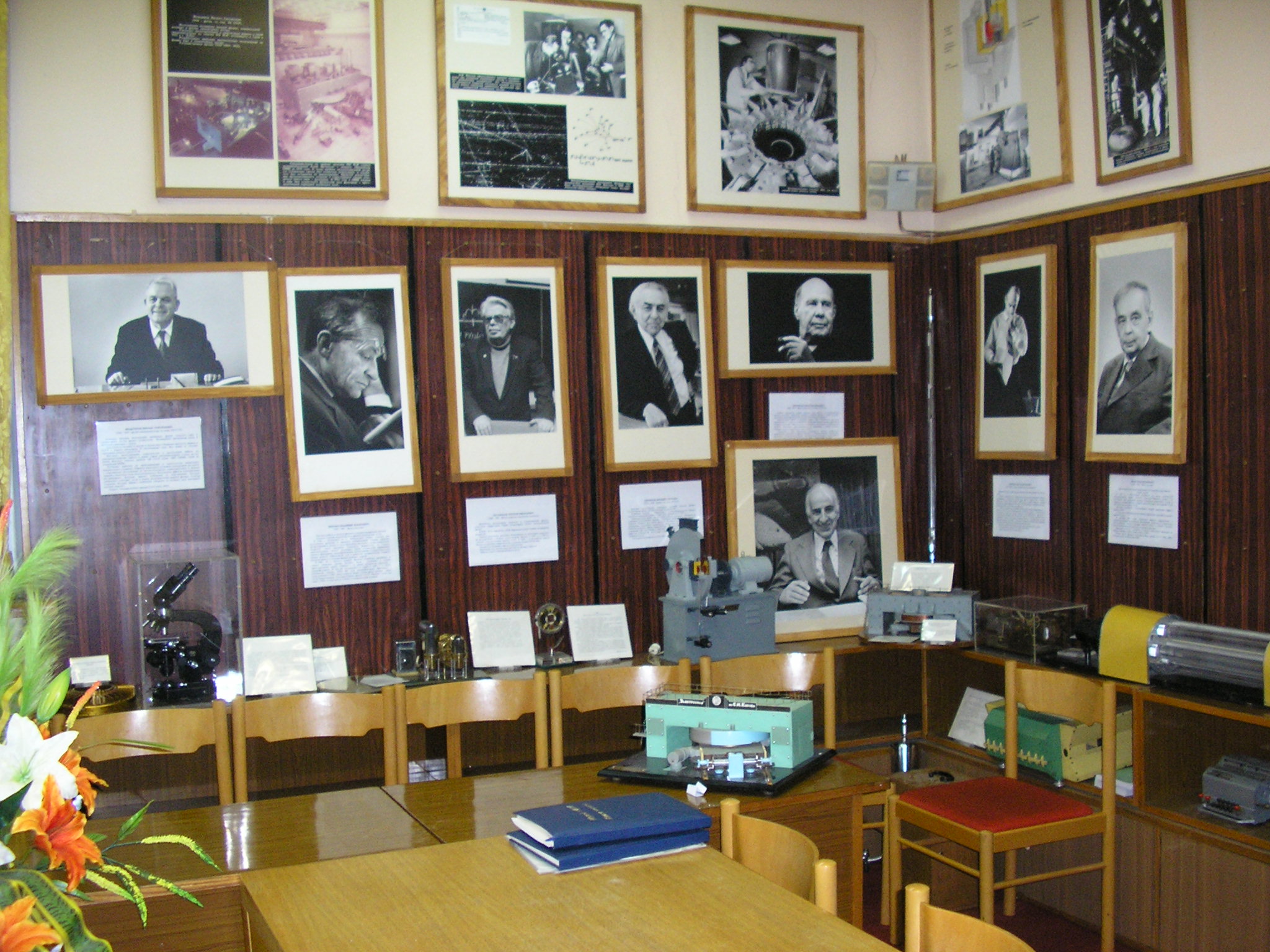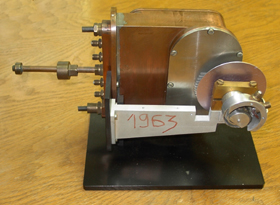|
|
Exposition
 The main exposition currently includes:
The main exposition currently includes:
1. More than 30 scientific devices and models of scientific and technical installations.
2. Information boards telling the history of researches of JINR and the essence of discoveries made in the Institute.
3. Portraits of famous physicists - founders and leading scientists of JINR.
The basis of the modern museum exposition was an exhibition about the history of the JINR, prepared in 1993 for the Polytechnical Museum. After completion of the exposure at the Polytechnical Museum, it was placed on permanent basis at the Museum of the History of Science and Technology JINR.
Established in 1993, the exposition has been repeatedly supplemented by individual exhibits and information boards. Currently, however, in order to effectively carry out the tasks, adequately represent the Institute and its activities to the visitors, the museum need renovation and radical renewal of its exposure.
Among the rare exhibits are personal microscope of Academician I.Kurchatov, presented to M.Mescheryakov and emulsion stacks - the device that was used in the first experiments on the synchrocyclotron in Dubna in 1949. Both exhibits were donated to the museum by M.Mescheryakov.
Microscope of Kurchatov |

|
This microscope was presented in January 1949 by I.Kurchatov to M.Mescheryakov when moving from the Laboratory number 2 to the construction site of a 6-meter synchrocyclotron.
The exhibit was donated to the museum by M.Mescheryakov. |
Synchrocyclotron. Model. Scale 1:50 |

| Synchrocyclotron (Phasotron) for a proton energy of 680 MeV, with the launch of which in December 1949 high-energy physics began in the Soviet Union, served as the experimental base of the Institute since JINR formation until 1976, when the service life of its hardware was completely exhausted. In 1979, the accelerator was shut down for reconstruction. The reconstruction project provided the creation in the existing building of a new type of accelerator - phasotron.
In 1984, after the reconstruction of the synchrocyclotron, physical start-up of the world's first phasotron with a spatially varying magnetic field was conducted at the JINR. Currently phasotron is mainly used in biomedical researches and in radiation therapy.
|
Stereomagnifying glass. Nature. |

|
Stereomagnifying glass for viewing films from film cameras.
The design of E.Kozubsky.
|
Impulsive fast reactor |

|
JINR is a pioneer of creating the periodic pulsed reactor for neutron physics. The first such IBR began operating in 1960 and reached a value of impulsive power in its 5000 kW.
IBR reactor produces neutrons in the powerful, short bursts. Flashes (impulses) occur in those moments when a liner disk U- 235, fortified in the rapidly rotating disk, runs between the two halves of the core, drawn from the plutonium fuel elements. The chain reaction is controlled by the movement of the regulating rods.
|
Photoemulsion camera of dispersion. Nature. |

|
It was used by M.Mescheryakov in the first experiments on the 6-meter synchrocyclotron in 1949. Detectors were installed around the plate with a thick layer of emulsion.
The exhibit was donated to the museum by M.Mescheryakov.
|
"Roulette" - for the simulation of nuclear reactions (the first "computer" JINR)
|

|
With the help of this device staff of Physics and Power Engineering Institute (Obninsk) and JINR produced IBR pulse reactor calculations in 1956-1957.
For one calculation the physicist had to turn the disk during the whole month (on a modern PC such a calculation would take less than one second).
The exhibit was donated to the museum by E.Shabalin.
|
Model of the installation used in the internal beam of the cyclotron of the Laboratory of Nuclear Problems. |
 |
The exhibit was donated to the museum by V.Karnaukhov.
|
Adgezator. Model. Scale 1:50 |

|
The model of the first installation for the experimental validation of a new method of particle accelerator, which later received the name of "collective method of acceleration".
|
The telescope of proportional counters |

|
The telescope of proportional counters was used in the first experiment to monitor the delayed proton emitters, 1962 - 1963 years. The discovery of proton radioactivity was made by a group on V.Karnauhov's guide. In the National Register of discoveries it is at number 35.
The exhibit was donated to the museum by V.Karnaukhov.
|
Part of the installation for the synthesis of transuranium elements.Nature |

|
In 1962 - 65 years on the internal bunch of the cyclotron U-300 with the help of this installation 102 and 103 elements of the Periodic Table of D.Mendeleev were received.
|
Superconducting magnets of the Laboratory of High Energies |

|
Developed in the Laboratory of High Energies the concept of using superconductivity in accelerating equipment allowed to create the most cost-effective superconducting magnets for synchrotron.
|
Filter holder 142 |

|
Filter holder was intended for various objects microfiltration of liquids or gases by direct suppression of the membrane under pressure.
|
|
